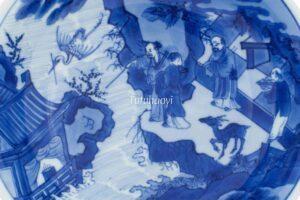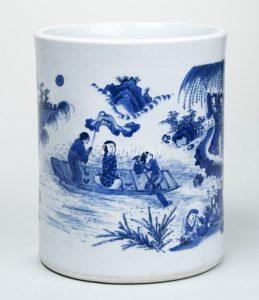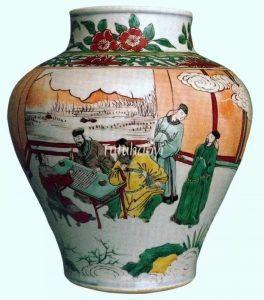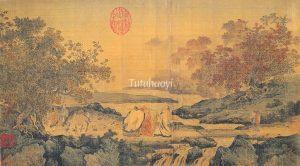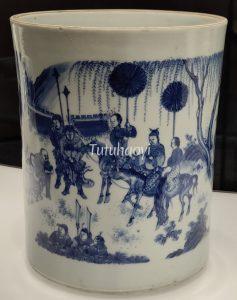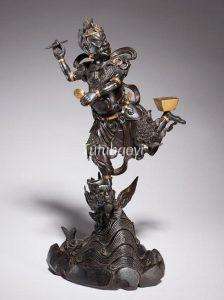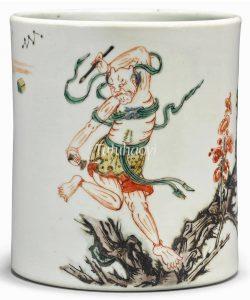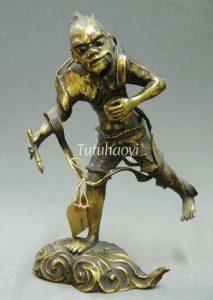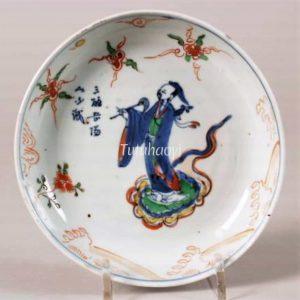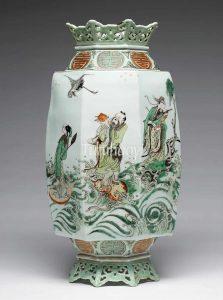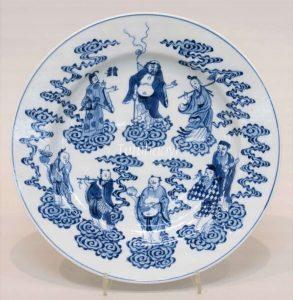Showing Results Containing
More often than not, traditional Chinese motifs or symbols are not receiving their deserved attention, being given simplistic or inadequate labels and inaccurate explanations in our museums, catalogues, or even scholarly writing. The treatment of ...
The story of Cai Xiang’s building of the Luoyang Bridge comes from a popular play in the Ming dynasty. It blends history with legend. In the Northern Song, Cai Xiang—renowned calligrapher and prefect of Quanzhou—undertook the building of the Luoyang Bridge. The project took seven years to complete and has stood for nearl...
The Tale of the Curly-Bearded Fellow (Qiu Ran Ke Zhuan 虬髯客传) by Tang dynasty writer Du Guangting 杜光庭 recounts a vivid episode from the youth of Emperor Taizong, Li Shimin 李世民 (598–649). Set during the final years of the Sui dynasty—when warlords rose across a fractured empire—the story reflects the peop...
The tale of Three men laughing by the Tiger Creek was already circulating during the Tang dynasty and gained widespread popularity in the Song dynasty.
According to legend, Huiyuan 慧远 (334–416), the abbot of Donglin Temple on Mount Lu, was known for never seeing his guests off beyond the bounds of Tiger C...
Legend of the Epiphyllum (Tanhua Ji 昙花记) is a late Ming dynasty drama written by the accomplished scholar Tu Long (屠隆, 1542–1605), composed during the Wanli reign. Renowned for his achievements in literature, art, and Buddhist philosophy, Tu Long described this legendary play as a work intended ‘to expound the l...
As the deity who grants success in the imperial examinations, Kui Xing 魁星 is revered as the God of Literature. The image of Kui Xing is often presented as a ...
The term ‘Kui Xing’ originally referred to the North Star (北斗 Bei Dou). As stated in the Historical Records by Sima Qian (司马迁 145BCE – ?) , ‘Kui is the first star of the Great Dipper constellation’. Therefore, Kui also carries the meaning of being the first.
Gu Yanwu (顾炎武 1613–1...
As a young man, Lv Dongbin (吕洞宾, or Lü Dongbin) passed several rounds of civil-service examinations and was twice appointed as a county magistrate. After being bored with officialdom, he went to become a recluse in the mountains. Not until he metContinue Reading
Zhongli Quan (钟离权, or 汉钟离 Han Zhongli) is regarded as the most eminent among the Daoist Eight Immortals. Respected as ‘Zhengyang Zushi (正阳祖师)’ or the ‘Grand Master with Pure Yang Energy’, he is one of the founders of the northern school of the Complete Realisation (Quanzhen jiao 全真教) S...
In this scene, there are several Chinese longevity symbols such as the
